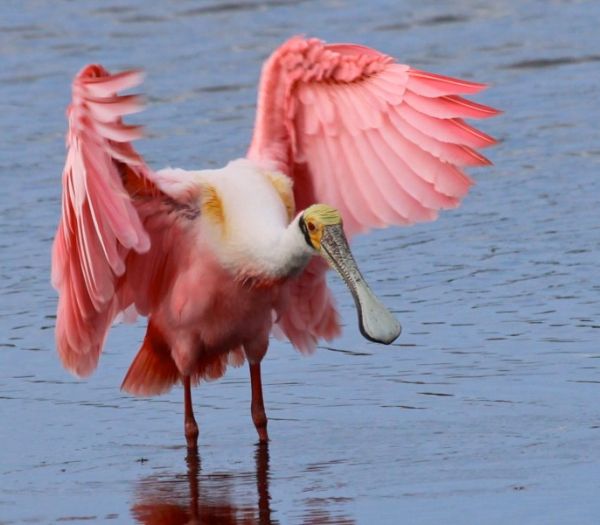
Pretty in pink: A roseate spoonbill at Merritt Island, Florida.
(photo by Chuck Tague)

Pretty in pink: A roseate spoonbill at Merritt Island, Florida.
(photo by Chuck Tague)

A bird this unusual must surely be from the tropics, but not this one.
The Eurasian spoonbill (Platalea leucorodia) is a large white wading bird with black legs and a spatulate bill that’s black with a yellow tip. In breeding plumage they have feather crests and yellow chins. Click here for another view.
Spoonbills live in fresh and saltwater wetlands where they hunt for prey by sweeping their long bills side to side below the surface, snapping them shut when they feel prey close by.
Amazingly this spoonbill nests in both temperate and tropical zones. Though they’re sparse in Europe, their range extends to Africa and wide swaths of Asia (see map). Four hundred years ago Eurasian spoonbills disappeared from the British Isles. Happily, they returned to breed in the marshes of Norfolk County in 2010.
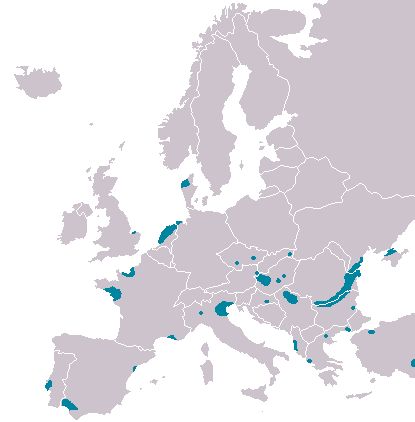
Of the six spoonbill species on Earth, all but one are white. The pink one lives in our hemisphere, the roseate spoonbill (Platalea ajaja).

Click here to see the six species of spoonbills, Platalea. Ours is the one with “A ha ha!” in his name: Platalea ajaja!
(photo credits:
Eurasian spoonbill by Andreas Trepte, www.photo-natur.net, via Wikimedia Commons
map of European breeding range from Wikimedia Commons; click on the map to see the original
Roseate spoonbill by Steve Gosser)

On Throw Back Thursday:
Because of a poem, I have another name for snowy egrets that describes how I feel when I see them:

North America’s western birds are often similar to their eastern cousins.
Based on color you might mistake this black phoebe (Sayornis nigricans) for a very dark junco but his body shape and habits match the eastern phoebe (Sayornis phoebe).
Notice his flycatcher beak (not a seed-eating beak) and slightly angular head. Like the eastern phoebe he perches prominently and upright. If we could see him in motion, he’d be fly catching. Right now he has a message for hikers. 😉
You’ll have to go west if you want to see this bird. Native to southwestern Oregon, California, Arizona, New Mexico and southwest Texas, the black phoebe barely migrates. You can find him year round in Central and South America, too.
Click here for his range map.
(photo by Steve Valasek)
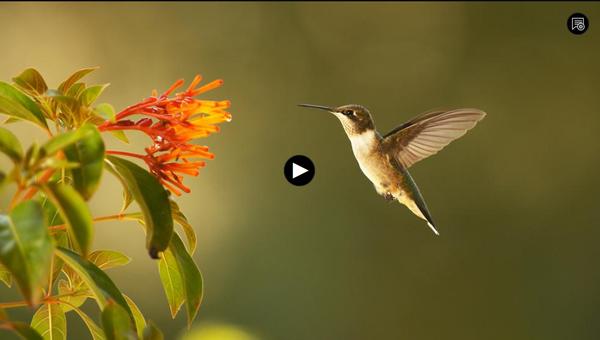
Tiny and jewel-like, hummingbirds are “super-birds.” They beat their wings 80 times per second and fly backwards and upside down. And that’s only the start.
Next Wednesday we’ll get to see these super birds at their best on PBS NATURE’s season premiere: Super Hummingbirds.
Filmed in Colombia, Peru and Costa Rica, the program showcases surprising information about hummingbirds’ lives.
A side trip to Arizona captured the Costa’s hummingbird courtship ritual. During the male’s sky dance he splays out his purple gorget to impress his potential mate. The screenshot below is just a hint at his beauty. He’s amazing in the video.
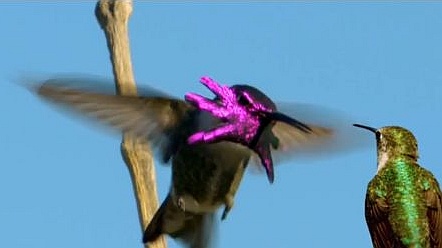
Watch Super Hummingbirds next Wednesday, October 12, 2016 on PBS NATURE at 8pm (Eastern time). In Pittsburgh, it’s on WQED.
And while you’re waiting for next Wednesday, get your “hummingbird fix” at Cornell Lab’s West Texas Hummingbird Cam near Fort Davis, Texas. Click here to watch.
(Super Hummingbirds video and screenshot from PBS NATURE)
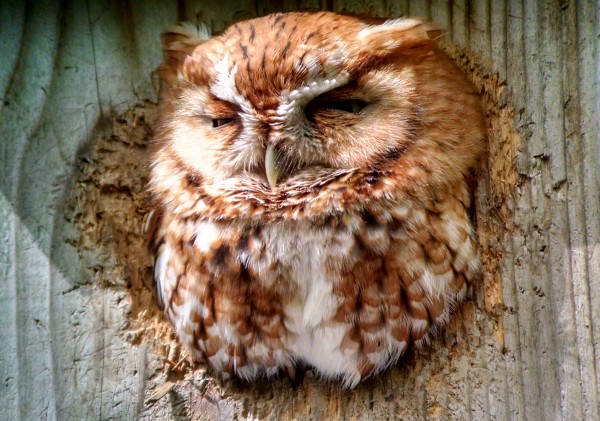
Back in May I saw an eastern screech-owl snoozing in a nestbox at Maumee Bay State Park, Ohio. His photo, above, is on my cellphone but I can’t take credit for its beauty.
I have all the tools to create this photo — a bird scope and a cellphone — but I don’t have the skill yet. I watched bird guide Carlos Bethancourt set my cellphone on the scope (without a scope adapter), manipulate the screen, and take three beautiful pictures.
Carlos made it look easy but I can’t get my cellphone to behave. My two best attempts at photographing a robins’ nest look like this.
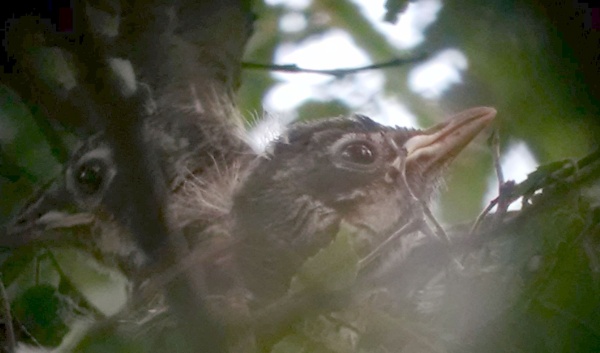
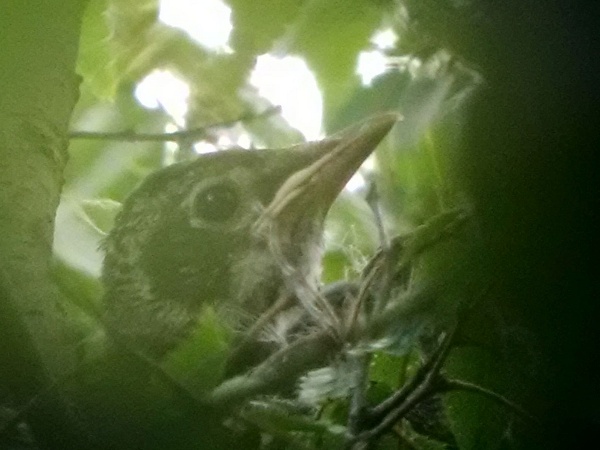
I need a lot more practice to make it perfect.
(owl photo by Carlos Bethancourt using Kate St. John’s cellphone, robins’ photos by Kate St. John)
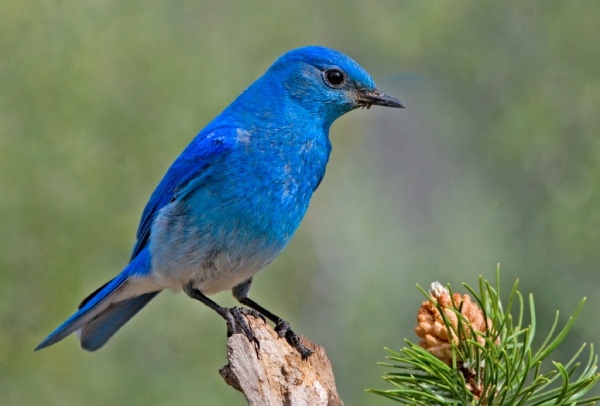
When my friend Chuck Tague led an outing he’d ask us at the end, “What was your Best Bird?” Now that I’m back from Montana I’ve made a list. (The photos are from Wikimedia Commons.)
Best of the Best: Mountain bluebird. While standing next to a short spruce at Logan Pass, I saw a Life Bird(*) fly in and perch just above me. This bluest Bird of Happiness completes the trio of bluebird species in North America: eastern, western and mountain.
Two of my Best Birds were named for explorers, Lewis and Clark.
I’d seen a Lewis’s woodpecker fly by the Allegheny Front Hawk Watch on October 20, 2002 (very unusual!) but in Missoula I was hungry to see more. My friend Keith Kuhn asked a resident if we could walk across her property to the shore of the Bitterroot River where they’d been reported the day before. She was very accommodating when he said “Lewis’s woodpecker.” The birds come to her suet feeder. It was a thrill to see three pink-bellied woodpeckers fly-catching over the river.
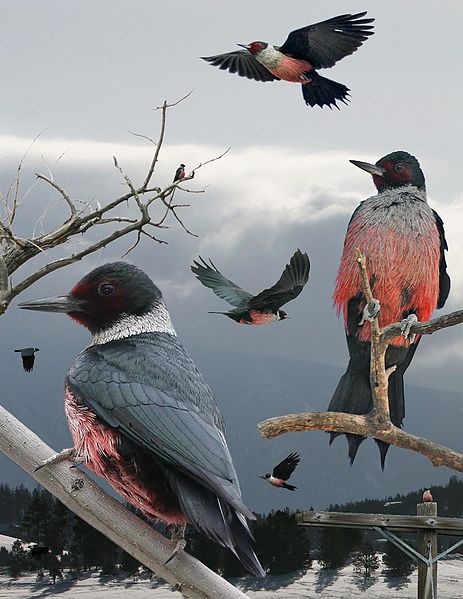
Clark’s nutcracker resembles a woodpecker but he’s actually a Corvid who stores and eats pine nuts. We saw a pair of them fly over Logan Pass, calling and chasing each other.
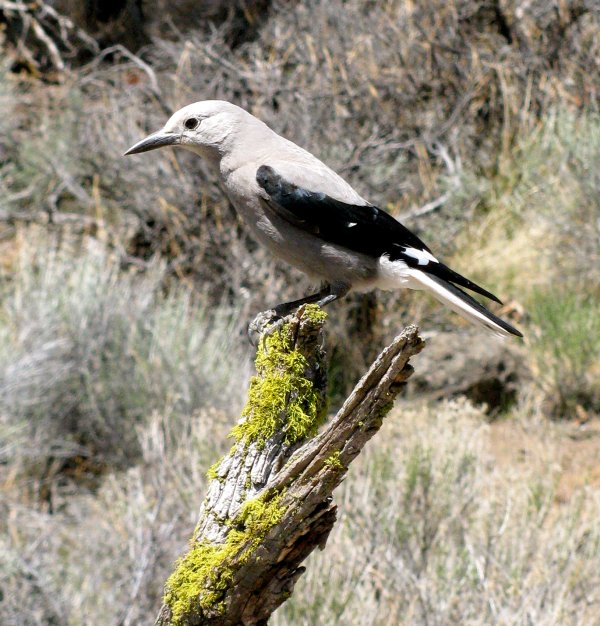
I was afraid I wouldn’t see an American dipper but I shouldn’t have worried. Because they were nesting we saw adult dippers gathering food and a fledgling waiting for its next meal at St. Mary’s Falls. Very good looks! (Click here to see one swim.)
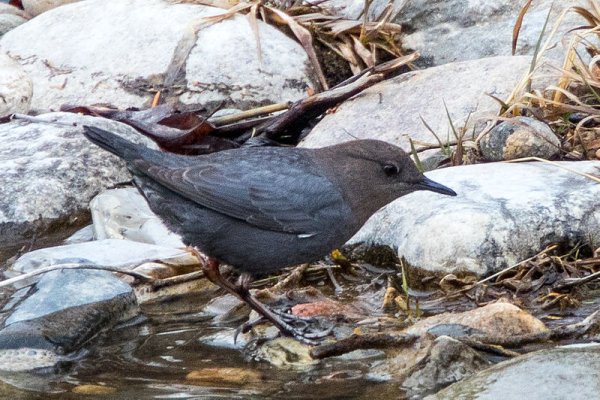
In only eight days I saw 105 species and 11 Life Birds in western Montana. It was hard to pick just four of the Best!
(photos from Wikimedia Commons. Click on the images to see the originals)
(*) A “Life Bird” is a species you see for the first time in your life.
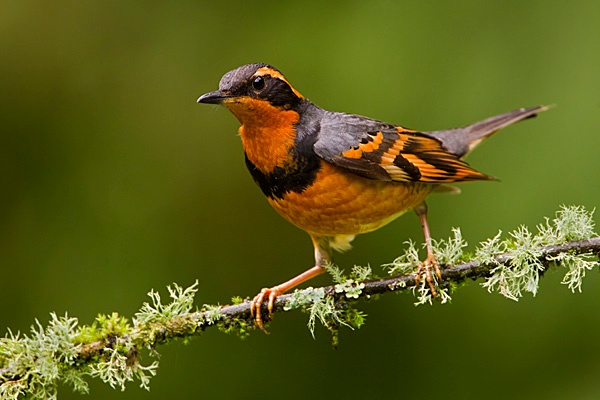
30 June 2016, Glacier National Park
Spring starts late in the northern Rockies so many birds are still singing here in Glacier National Park. Fortunately the varied thrush is one of them.
In the breeding season the varied thrush (Ixoreus naevius) is a shy bird of mature western forests. He sings from the top of a conifer for 10 to 15 minutes but the trees are so tall that he’s hard to find. If he wasn’t singing we’d never know he’s there.
His song consists of one note that lasts two seconds. He pauses 3 to 20 seconds and then sings again, a different note. The disembodied sound echoes in the canyons.
Like all thrushes his syrinx allows him to blend two sounds so his note has a burry quality. It sounds like this:
“Varied Thrush (Ixoreus naevius meruloides)” from xeno-canto by Richard E. Webster. Genre: Turdidae.
This song is unique in North America and easy to identify by ear.
Just one note.
(photo by Eleanor Briccetti via Wikimedia Commons)
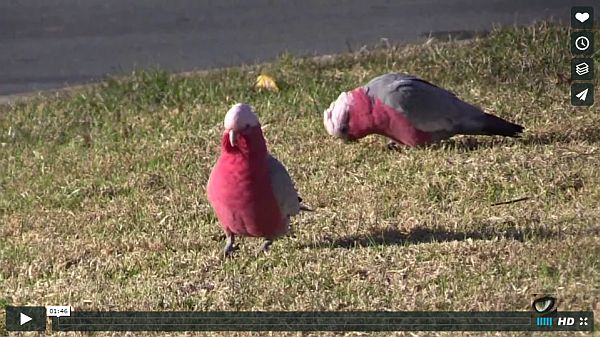
We haven’t had wild parrots in Pennsylvania since the Carolina parakeet(*) was extirpated in the 1800’s … and our lives are poorer for it.
In Australia some parrots are so common that they’re overlooked or considered pests. The galahs (Eolophus roseicapillus) fall into that category.
Click on the screenshot to watch them in southern Australia. You’ll recognize a familiar introduced species grazing with them. Enjoy stunning cockatoos at the 1:20 mark.
Parrots are gorgeous.
(screenshot of galahs from video by the green eye)
(*)The last Carolina parakeet (Conuropsis carolinensis) died in captivity in the Cincinnati Zoo on February 21, 1918. That’s also where the last passenger pigeon died three and a half years earlier on September 1, 1914.

If you’re in the right place at the right time you can find herons in red and blue!
Barloventomagico photographed this scarlet ibis and little blue heron at El Cedral Ranch in southern Venezuela.
All they need is a large yellow bird to make up the primary colors. In Venezuela, which bird would that be?
(photo by barloventomagico via Flicker)